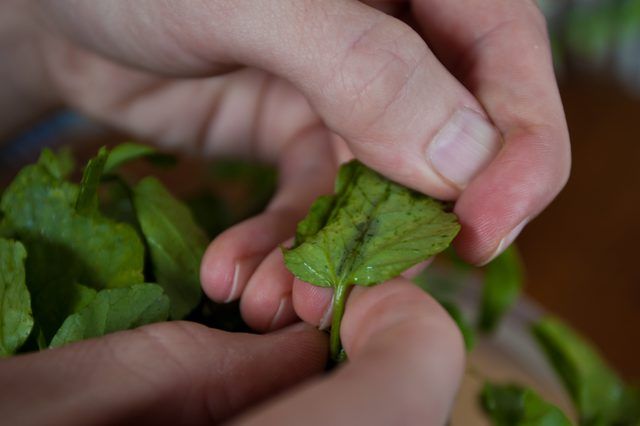Bulbs
Flower Basics
Flower Beds & Specialty Gardens
Flower Garden
Garden Furniture
Garden Gnomes
Garden Seeds
Garden Sheds
Garden Statues
Garden Tools & Supplies
Gardening Basics
Green & Organic
Groundcovers & Vines
Growing Annuals
Growing Basil
Growing Beans
Growing Berries
Growing Blueberries
Growing Cactus
Growing Corn
Growing Cotton
Growing Edibles
Growing Flowers
Growing Garlic
Growing Grapes
Growing Grass
Growing Herbs
Growing Jasmine
Growing Mint
Growing Mushrooms
Orchids
Growing Peanuts
Growing Perennials
Growing Plants
Growing Rosemary
Growing Roses
Growing Strawberries
Growing Sunflowers
Growing Thyme
Growing Tomatoes
Growing Tulips
Growing Vegetables
Herb Basics
Herb Garden
Indoor Growing
Landscaping Basics
Landscaping Patios
Landscaping Plants
Landscaping Shrubs
Landscaping Trees
Landscaping Walks & Pathways
Lawn Basics
Lawn Maintenance
Lawn Mowers
Lawn Ornaments
Lawn Planting
Lawn Tools
Outdoor Growing
Overall Landscape Planning
Pests, Weeds & Problems
Plant Basics
Rock Garden
Rose Garden
Shrubs
Soil
Specialty Gardens
Trees
Vegetable Garden
Yard Maintenance
How to Grow Watercress at Home in a Container
How to Grow Watercress at Home in a Container. When you see watercress (Nasturtium officinale) growing in the wild, it's usually partially submerged in slow-moving water. It might not seem likely from such a natural setting, but watercress makes a good garden plant. You can grow it in constantly moist soil, but it tastes stronger than plants grown...
When you see watercress (Nasturtium officinale) growing in the wild, it's usually partially submerged in slow-moving water. It might not seem likely from such a natural setting, but watercress makes a good garden plant. You can grow it in constantly moist soil, but it tastes stronger than plants grown in water. It has a more familiar taste when grown in a container with access to standing water that is frequently changed. Watercress grows as a perennial in U.S. Department of Agriculture plant hardiness zones 3 through 11.
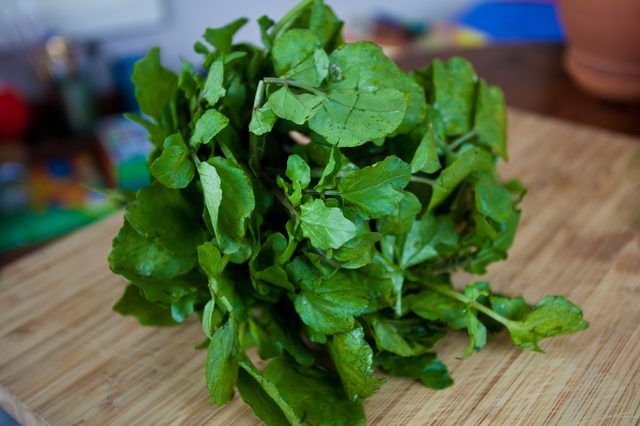
Perhaps the easiest way to grow watercress is to plant seeds or root watercress cuttings in a 15-inch clay pot with holes in the bottom. Fill the container with a mixture of rich soil, sand and pebbles. You could also use a soilless mix of equal parts perlite or vermiculite and peat. Put the pot in a 17-inch saucer filled with 2 inches of water. In the early spring, thinly sow the seeds 1/4 inch deep on top of the potting mix. Watercress stems from the store root readily. Remove the last pair of leaves from the stem and bury the node beneath the potting medium. Final spacing of seedlings or cuttings should be 8 inches apart. Grow watercress in full sun. Add water to the saucer every day and change the water completely once or twice a week. In hot weather, change the water more frequently. Renew the pots every two years, cleaning the pots and changing the soil. Watercress is sensitive to hot temperatures and to preserve it during summer and keep it from going into heat shock, Mother Earth News suggests placing several ice cubes daily into the saucer holding the water.
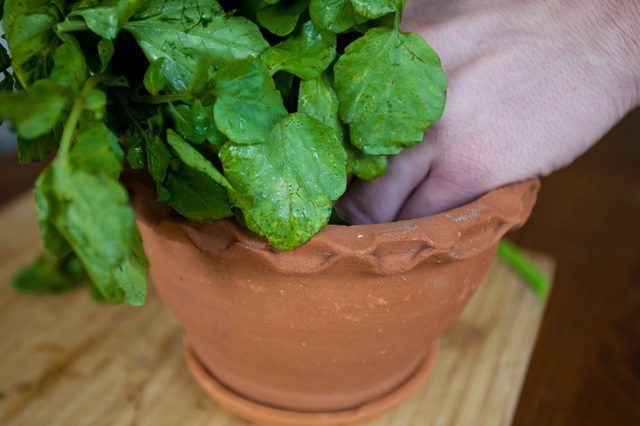
To simulate a slowly moving stream, put a watercress container beneath a faucet outfitted with a regulator that slowly drips water into the container, keeping the potting mix constantly moist and the water moving through the soil. You could also use smaller diameter plastic containers with holes that fit inside a bucket. Keep 2 to 3 inches of water in the bucket, and change the water once to twice a week.
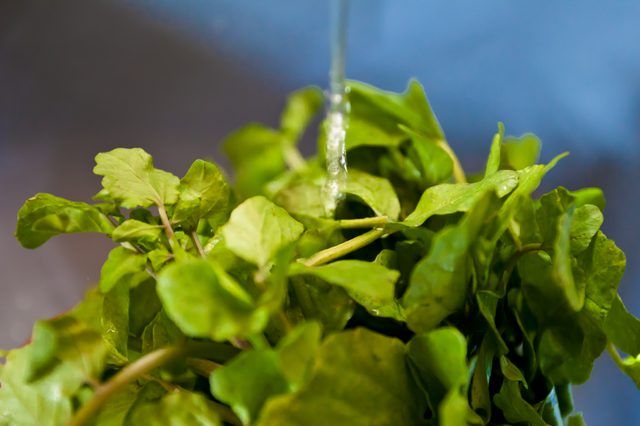
Harvesting watercress keeps the plants pruned. You can begin when seedlings are about 3 weeks old. Use sharp scissors that have been dipped in rubbing alcohol to cut the stems. In summer, cut watercress back by removing 4 inches from the stem ends. This leads to new fall growth. Watercress doesn't have high fertilizer needs, but may benefit from application of a 24-8-16 water-soluble fertilizer mixed at the rate of 1 tablespoon per 1 gallon of water. Use it once every two weeks instead of the usual water replacement in the saucer, or in addition to water dripping from a faucet.
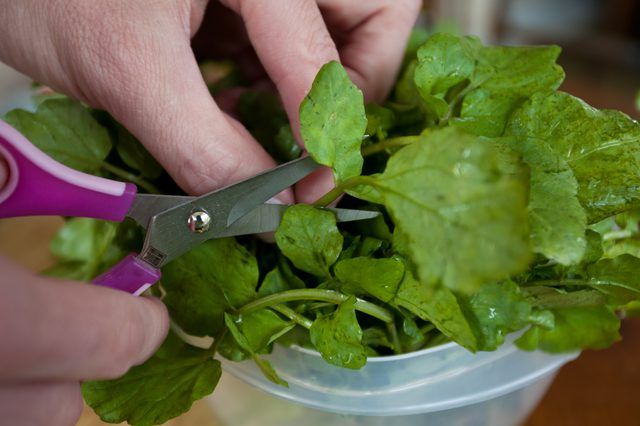
Watercress is relatively pest-free, but may sometimes be affected by whiteflies, snails or spider mites. Natural predators and parasites usually keep the insects in check. For whiteflies, look under the leaves to find the small, winged insects. In persistent infestations, spray the leaf undersides with a sharp stream of water or remove the affected leaves. Control snails by handpicking them and eliminating their hiding spots. Keep them from entering watercress containers by fastening a strip of copper screen at least 4 inches tall around the base of the pot.
